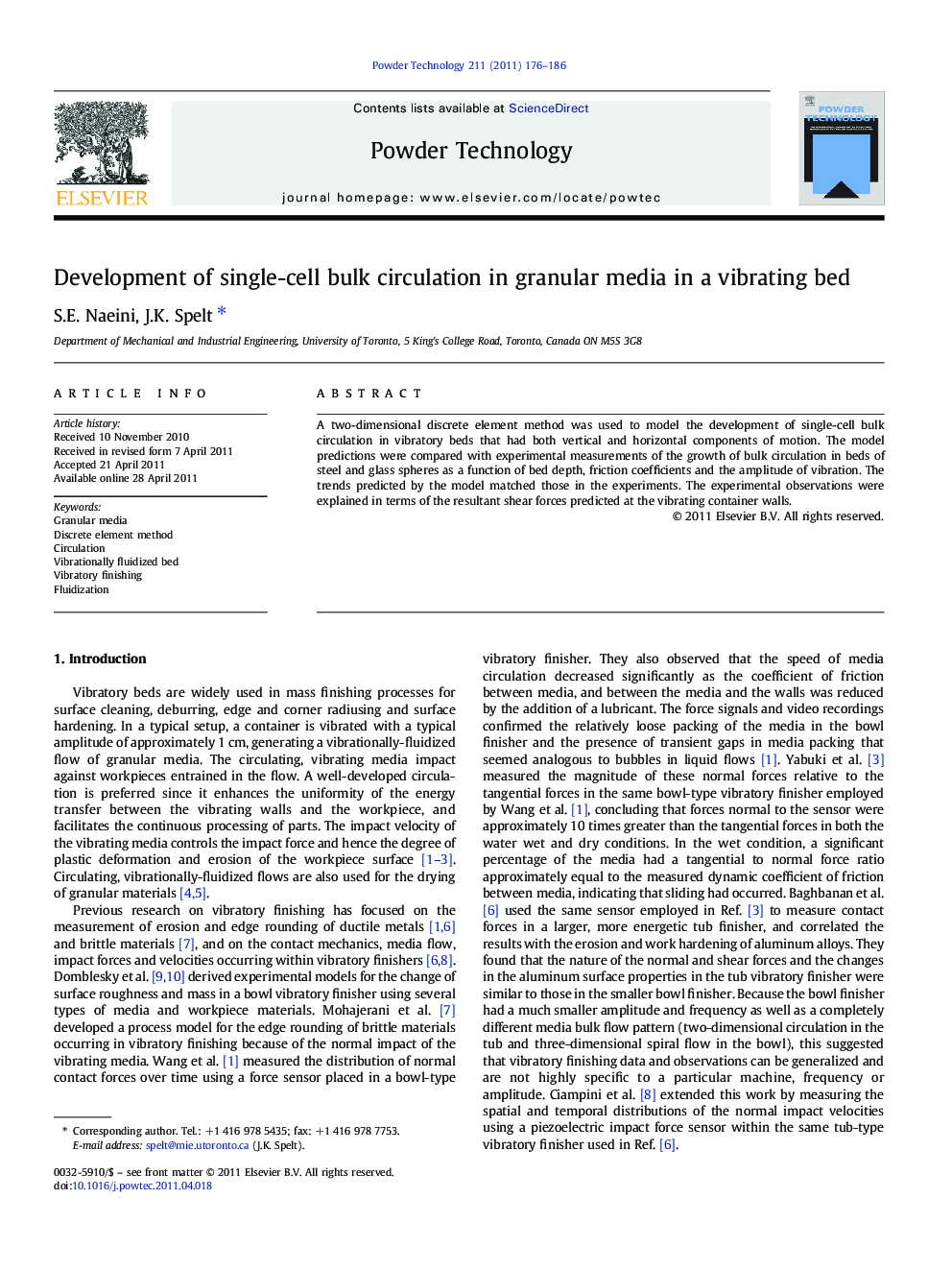| Article ID | Journal | Published Year | Pages | File Type |
|---|---|---|---|---|
| 237561 | Powder Technology | 2011 | 11 Pages |
A two-dimensional discrete element method was used to model the development of single-cell bulk circulation in vibratory beds that had both vertical and horizontal components of motion. The model predictions were compared with experimental measurements of the growth of bulk circulation in beds of steel and glass spheres as a function of bed depth, friction coefficients and the amplitude of vibration. The trends predicted by the model matched those in the experiments. The experimental observations were explained in terms of the resultant shear forces predicted at the vibrating container walls.
Graphical abstractA two-dimensional discrete element method was used to model the development of single-cell bulk circulation in vibratory beds that had both vertical and horizontal components of motion. The trends predicted by the model matched those in the experiments. The experimental observations were explained in terms of the resultant shear forces predicted at the vibrating container walls.Figure optionsDownload full-size imageDownload as PowerPoint slideResearch highlights► Circulation increases with friction, bed depth and the amplitude of vibration. ► Resultant shear forces against container walls govern circulation. ► Circulation develops as a progressive propagation from the walls into the bulk.
